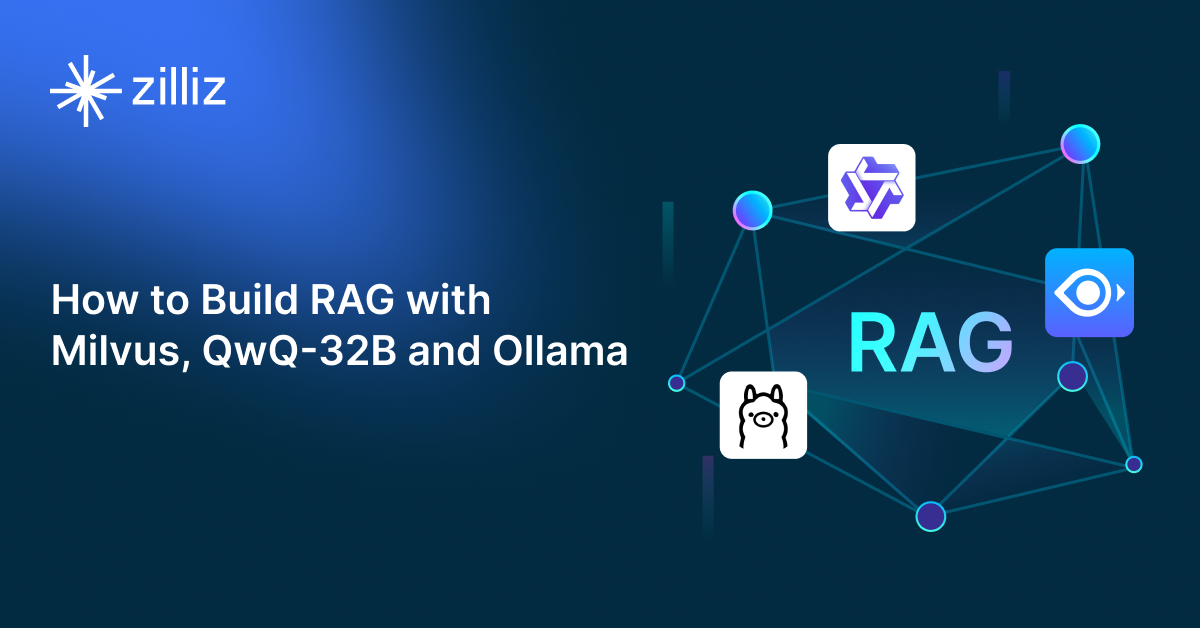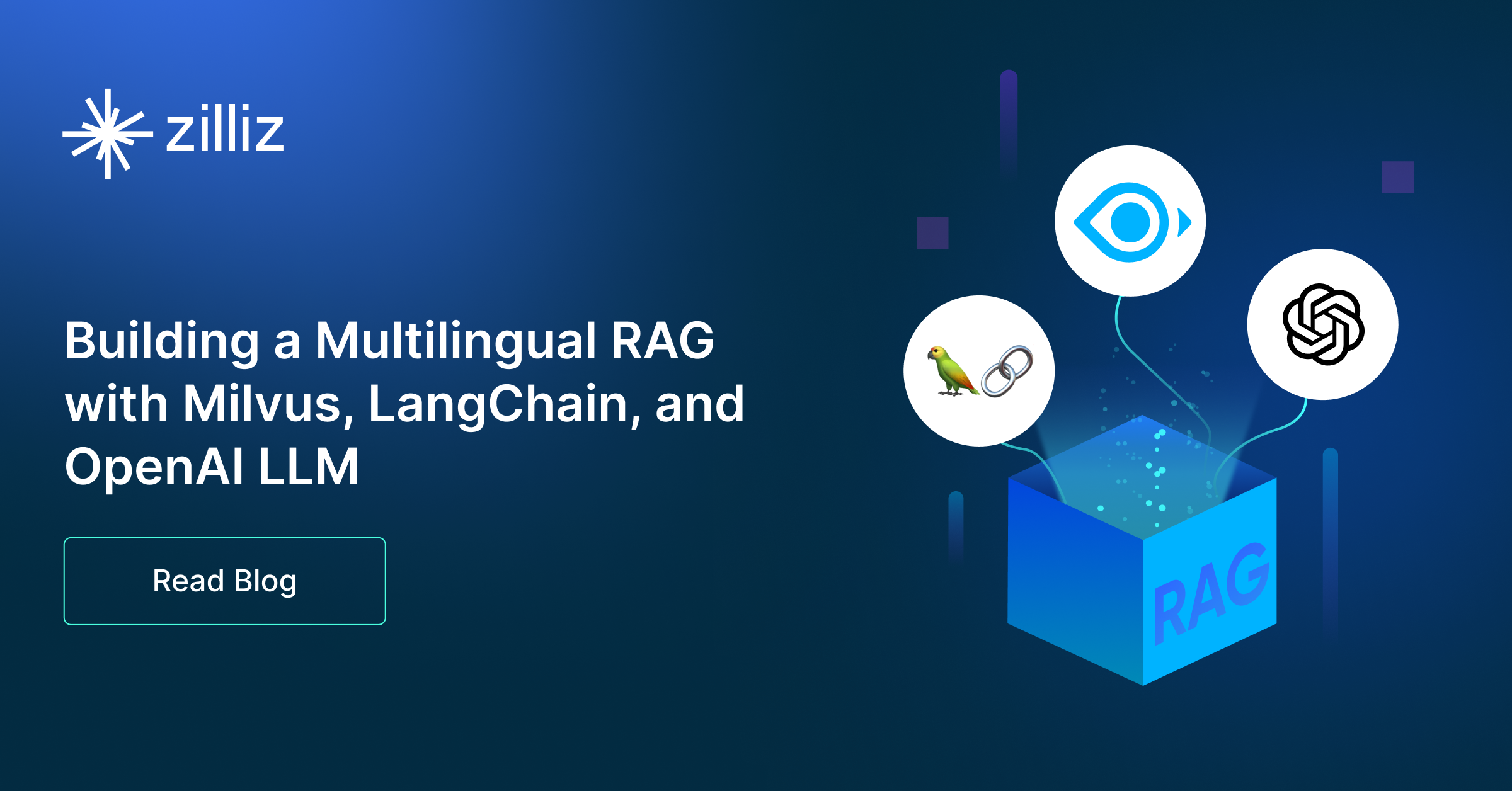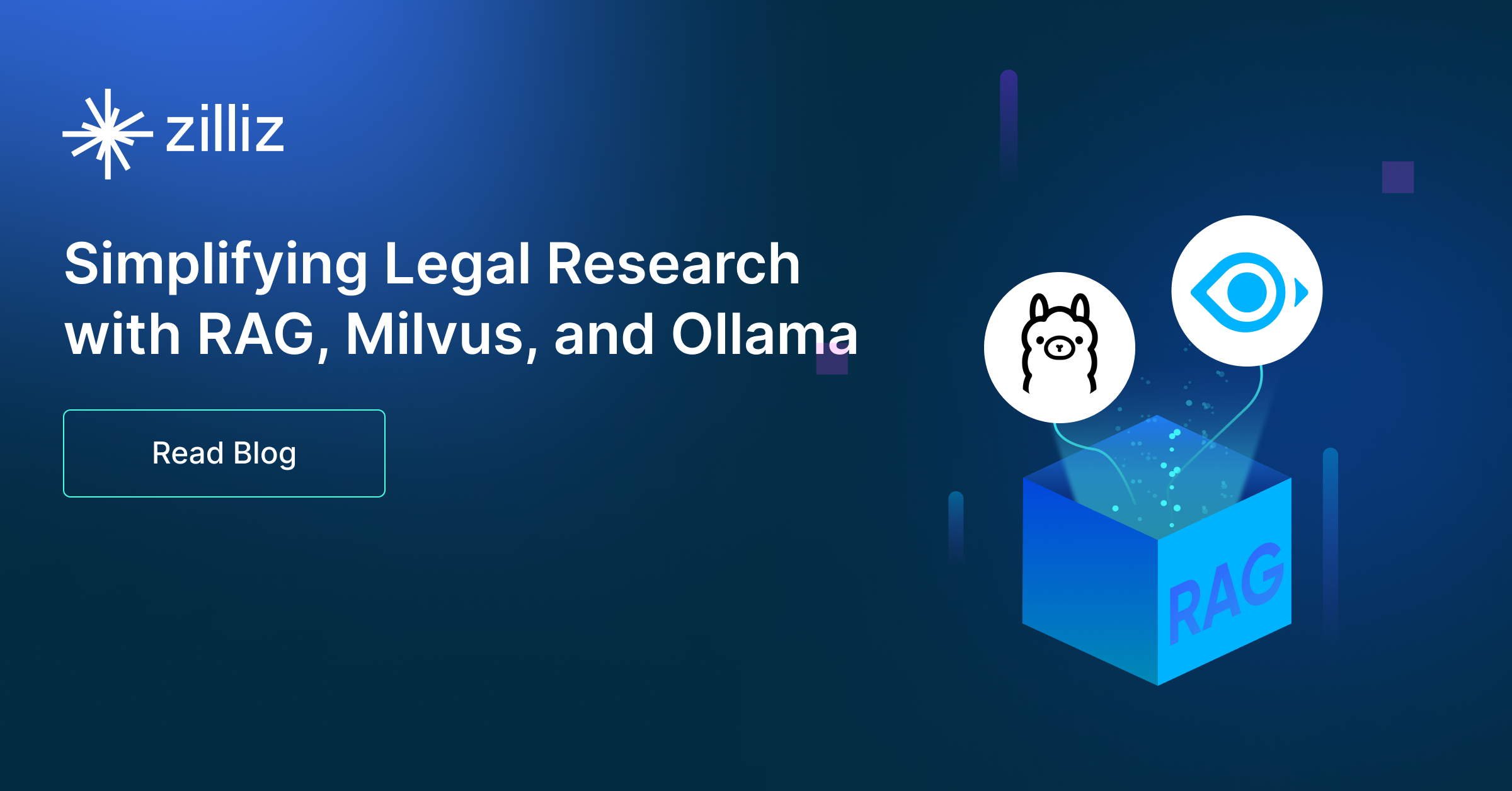Build RAG Chatbot with LangChain, pgvector, Anthropic Claude 3.5 Sonnet, and Cohere embed-multilingual-v2.0
Introduction to RAG
Retrieval-Augmented Generation (RAG) is a game-changer for GenAI applications, especially in conversational AI. It combines the power of pre-trained large language models (LLMs) like OpenAI’s GPT with external knowledge sources stored in vector databases such as Milvus and Zilliz Cloud, allowing for more accurate, contextually relevant, and up-to-date response generation. A RAG pipeline usually consists of four basic components: a vector database, an embedding model, an LLM, and a framework.
Key Components We'll Use for This RAG Chatbot
This tutorial shows you how to build a simple RAG chatbot in Python using the following components:
- LangChain: An open-source framework that helps you orchestrate the interaction between LLMs, vector stores, embedding models, etc, making it easier to integrate a RAG pipeline.
- Pgvector: an open-source extension for PostgreSQL that enables efficient storage and querying of high-dimensional vector data, essential for machine learning and AI applications. Designed to handle embeddings, it supports fast approximate nearest neighbor (ANN) searches using algorithms like HNSW and IVFFlat. Since it is just a vector search add-on to traditional search rather than a purpose-built vector database, it lacks scalability and availability and many other advanced features required by enterprise-level applications. Therefore, if you prefer a much more scalable solution or hate to manage your own infrastructure, we recommend using Zilliz Cloud, which is a fully managed vector database service built on the open-source Milvus and offers a free tier supporting up to 1 million vectors.)
- Anthropic Claude 3.5 Sonnet: This advanced model in the Claude 3 family is designed for nuanced understanding and creative language generation. With enhanced prompt comprehension and contextual awareness, it excels in complex dialogue, creative writing, and sophisticated content creation. Ideal for applications where deep engagement and high-quality output are paramount.
- Cohere embed-multilingual-v2.0: This model specializes in generating high-quality multilingual embeddings, enabling effective cross-lingual understanding and retrieval. Its strengths lie in capturing semantic relationships in diverse languages, making it suitable for applications such as multilingual search, recommendation systems, and global content analysis where language diversity is a critical factor.
By the end of this tutorial, you’ll have a functional chatbot capable of answering questions based on a custom knowledge base.
Note: Since we may use proprietary models in our tutorials, make sure you have the required API key beforehand.
Step 1: Install and Set Up LangChain
%pip install --quiet --upgrade langchain-text-splitters langchain-community langgraph
Step 2: Install and Set Up Anthropic Claude 3.5 Sonnet
pip install -qU "langchain[anthropic]"
import getpass
import os
if not os.environ.get("ANTHROPIC_API_KEY"):
os.environ["ANTHROPIC_API_KEY"] = getpass.getpass("Enter API key for Anthropic: ")
from langchain.chat_models import init_chat_model
llm = init_chat_model("claude-3-5-sonnet-latest", model_provider="anthropic")
Step 3: Install and Set Up Cohere embed-multilingual-v2.0
pip install -qU langchain-cohere
import getpass
import os
if not os.environ.get("COHERE_API_KEY"):
os.environ["COHERE_API_KEY"] = getpass.getpass("Enter API key for Cohere: ")
from langchain_cohere import CohereEmbeddings
embeddings = CohereEmbeddings(model="embed-multilingual-v2.0")
Step 4: Install and Set Up pgvector
pip install -qU langchain-postgres
from langchain_postgres import PGVector
vector_store = PGVector(
embeddings=embeddings,
collection_name="my_docs",
connection="postgresql+psycopg://...",
)
Step 5: Build a RAG Chatbot
Now that you’ve set up all components, let’s start to build a simple chatbot. We’ll use the Milvus introduction doc as a private knowledge base. You can replace it with your own dataset to customize your RAG chatbot.
import bs4
from langchain import hub
from langchain_community.document_loaders import WebBaseLoader
from langchain_core.documents import Document
from langchain_text_splitters import RecursiveCharacterTextSplitter
from langgraph.graph import START, StateGraph
from typing_extensions import List, TypedDict
# Load and chunk contents of the blog
loader = WebBaseLoader(
web_paths=("https://milvus.io/docs/overview.md",),
bs_kwargs=dict(
parse_only=bs4.SoupStrainer(
class_=("doc-style doc-post-content")
)
),
)
docs = loader.load()
text_splitter = RecursiveCharacterTextSplitter(chunk_size=1000, chunk_overlap=200)
all_splits = text_splitter.split_documents(docs)
# Index chunks
_ = vector_store.add_documents(documents=all_splits)
# Define prompt for question-answering
prompt = hub.pull("rlm/rag-prompt")
# Define state for application
class State(TypedDict):
question: str
context: List[Document]
answer: str
# Define application steps
def retrieve(state: State):
retrieved_docs = vector_store.similarity_search(state["question"])
return {"context": retrieved_docs}
def generate(state: State):
docs_content = "\n\n".join(doc.page_content for doc in state["context"])
messages = prompt.invoke({"question": state["question"], "context": docs_content})
response = llm.invoke(messages)
return {"answer": response.content}
# Compile application and test
graph_builder = StateGraph(State).add_sequence([retrieve, generate])
graph_builder.add_edge(START, "retrieve")
graph = graph_builder.compile()
Test the Chatbot
Yeah! You've built your own chatbot. Let's ask the chatbot a question.
response = graph.invoke({"question": "What data types does Milvus support?"})
print(response["answer"])
Example Output
Milvus supports various data types including sparse vectors, binary vectors, JSON, and arrays. Additionally, it handles common numerical and character types, making it versatile for different data modeling needs. This allows users to manage unstructured or multi-modal data efficiently.
Optimization Tips
As you build your RAG system, optimization is key to ensuring peak performance and efficiency. While setting up the components is an essential first step, fine-tuning each one will help you create a solution that works even better and scales seamlessly. In this section, we’ll share some practical tips for optimizing all these components, giving you the edge to build smarter, faster, and more responsive RAG applications.
LangChain optimization tips
To optimize LangChain, focus on minimizing redundant operations in your workflow by structuring your chains and agents efficiently. Use caching to avoid repeated computations, speeding up your system, and experiment with modular design to ensure that components like models or databases can be easily swapped out. This will provide both flexibility and efficiency, allowing you to quickly scale your system without unnecessary delays or complications.
pgvector optimization tips
To optimize pgvector in a Retrieval-Augmented Generation (RAG) setup, consider indexing your vectors using GiST or IVFFlat to significantly speed up search queries and improve retrieval performance. Make sure to leverage parallelization for query execution, allowing multiple queries to be processed simultaneously, especially for large datasets. Optimize memory usage by tuning the vector storage size and using compressed embeddings where possible. To further enhance query speed, implement pre-filtering techniques to narrow down search space before querying. Regularly rebuild indexes to ensure they are up to date with any new data. Fine-tune vectorization models to reduce dimensionality without sacrificing accuracy, thus improving both storage efficiency and retrieval times. Finally, manage resource allocation carefully, utilizing horizontal scaling for larger datasets and offloading intensive operations to dedicated processing units to maintain responsiveness during high-traffic periods.
Anthropic Claude 3.5 Sonnet optimization tips
Claude 3.5 Sonnet delivers enhanced reasoning while maintaining a balance between speed and complexity. Optimize by refining retrieval pipelines to prioritize top-ranked context, reducing unnecessary token consumption. Use adaptive chunking methods to provide structured and concise context, ensuring that the model receives only the most relevant information. Implement a dynamic query selection approach, routing simpler questions to Claude 3.5 Haiku for cost and speed efficiency while reserving Sonnet for deeper reasoning. Optimize API request handling with batch processing and response caching to lower latency. Fine-tune temperature and sampling settings, keeping them low for deterministic outputs in retrieval-based tasks. Use system instructions to guide responses, improving consistency and reducing hallucinations. If deploying at scale, leverage parallel query execution and real-time monitoring to dynamically adjust workloads based on system performance metrics.
Cohere embed-multilingual-v2.0 optimization tips
Cohere embed-multilingual-v2.0 supports a variety of languages, making it ideal for cross-lingual RAG setups. To optimize efficiency, preprocess text to remove language-specific noise and handle encoding issues, ensuring clean input for embedding generation. Implement efficient ANN algorithms, like FAISS with hierarchical indexing, to support fast retrieval across multilingual datasets. Compress embeddings using techniques such as product quantization or HNSW to optimize storage and speed. Use language detection models to route queries to the appropriate language-specific embeddings, minimizing unnecessary computation. Batch embedding operations and take advantage of parallel processing to handle large amounts of multilingual data efficiently. Regularly update embeddings to ensure the model reflects any language shifts or evolving trends.
By implementing these tips across your components, you'll be able to enhance the performance and functionality of your RAG system, ensuring it’s optimized for both speed and accuracy. Keep testing, iterating, and refining your setup to stay ahead in the ever-evolving world of AI development.
RAG Cost Calculator: A Free Tool to Calculate Your Cost in Seconds
Estimating the cost of a Retrieval-Augmented Generation (RAG) pipeline involves analyzing expenses across vector storage, compute resources, and API usage. Key cost drivers include vector database queries, embedding generation, and LLM inference.
RAG Cost Calculator is a free tool that quickly estimates the cost of building a RAG pipeline, including chunking, embedding, vector storage/search, and LLM generation. It also helps you identify cost-saving opportunities and achieve up to 10x cost reduction on vector databases with the serverless option.
 Calculate your RAG cost
Calculate your RAG cost
What Have You Learned?
By diving into this tutorial, you’ve unlocked the power of integrating cutting-edge tools to build a RAG system from the ground up! You learned how LangChain acts as the glue, orchestrating the entire pipeline—connecting your data, models, and logic seamlessly. With pgvector, you harnessed a robust vector database to store and retrieve embeddings efficiently, enabling lightning-fast semantic search. The magic of Anthropic’s Claude 3.5 Sonnet brought human-like reasoning and creativity to your system, generating insightful, context-aware responses. And by leveraging Cohere’s embed-multilingual-v2.0, you empowered your app to understand and process text across multiple languages, breaking down barriers for global applications. Along the way, you picked up optimization tricks like chunking strategies and indexing best practices, plus you discovered how the free RAG cost calculator helps you balance performance with budget—ensuring your projects are both powerful and practical.
Now you’ve seen firsthand how these pieces fit together: Cohere’s embeddings turn text into rich vectors, pgvector stores them for rapid access, LangChain retrieves the most relevant context, and Claude transforms it all into coherent, actionable answers. This isn’t just theory—you’ve got the blueprint to build smarter chatbots, multilingual knowledge bases, or domain-specific assistants that feel almost human. The future of AI-driven applications is in your hands. So what’s next? Experiment with different datasets, tweak those retrieval parameters, or add a custom UI to wow your users. Remember, every iteration makes your system sharper. The tools are here, the possibilities are endless, and you’re ready to innovate. Go build something amazing—then share it with the world! 🚀
Further Resources
🌟 In addition to this RAG tutorial, unleash your full potential with these incredible resources to level up your RAG skills.
- How to Build a Multimodal RAG | Documentation
- How to Enhance the Performance of Your RAG Pipeline
- Graph RAG with Milvus | Documentation
- How to Evaluate RAG Applications - Zilliz Learn
- Generative AI Resource Hub | Zilliz
We'd Love to Hear What You Think!
We’d love to hear your thoughts! 🌟 Leave your questions or comments below or join our vibrant Milvus Discord community to share your experiences, ask questions, or connect with thousands of AI enthusiasts. Your journey matters to us!
If you like this tutorial, show your support by giving our Milvus GitHub repo a star ⭐—it means the world to us and inspires us to keep creating! 💖
- Introduction to RAG
- Key Components We'll Use for This RAG Chatbot
- Step 1: Install and Set Up LangChain
- Step 2: Install and Set Up Anthropic Claude 3.5 Sonnet
- Step 3: Install and Set Up Cohere embed-multilingual-v2.0
- Step 4: Install and Set Up pgvector
- Step 5: Build a RAG Chatbot
- Optimization Tips
- RAG Cost Calculator: A Free Tool to Calculate Your Cost in Seconds
- What Have You Learned?
- Further Resources
- We'd Love to Hear What You Think!
Content
Vector Database at Scale
Zilliz Cloud is a fully-managed vector database built for scale, perfect for your RAG apps.
Try Zilliz Cloud for Free


